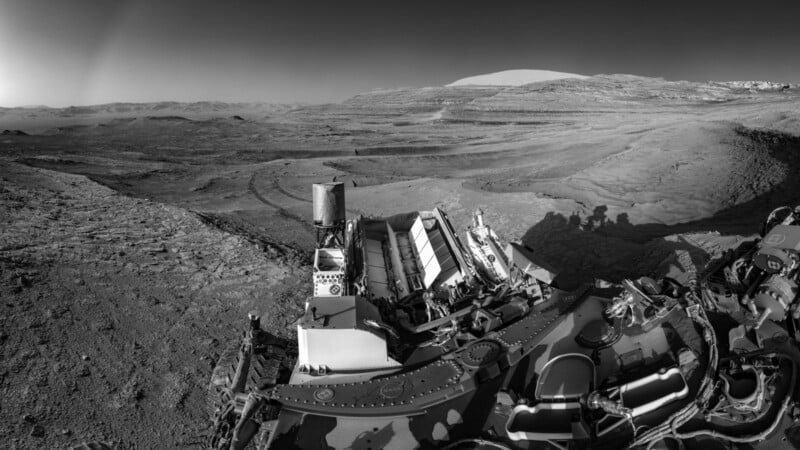
NASA’s Curiosity rover has captured photographs of a rock on Mars that closely resembles coral found on Earth.
Two objects were discovered on July 24 inside Gale Crater, both are small, pale rock shaped by wind erosion. Despite their appearance, they are not biological. In a statement, NASA highlighted one of the rock’s intricate branching structures in a black-and-white photo taken by Curiosity’s Remote Micro Imager. The object measures roughly 1 inch (2.5 centimeters) across.

“Curiosity has found many small features like this one, which formed billions of years ago when liquid water still existed on Mars,” NASA wrote earlier this week. “Water carried dissolved minerals into rock cracks and later dried, leaving the hardened minerals behind. Eons of sandblasting by the wind wore away the surrounding rock, producing the unique shapes seen today.”
On the same day, July 2, Curiosity stumbled across a similar coral-like rock and used its Mars Hand Lens Imager (MAHLI), which is a camera on the end of its robotic arm, to get a view of the wind-eroded rock. Live Science notes that the rock was nicknamed “Paposo” by the science team operating the rover.

The rover, which landed on Mars in 2012, continues its mission in the 96-mile-wide (154 km) Gale Crater. Operated by NASA’s Jet Propulsion Laboratory in California, Curiosity is searching for evidence that Mars was once capable of supporting life. To date, it has traveled about 22 miles (35 kilometers), stopping frequently to drill into rocks, collect samples, and conduct analysis.
Space.com reports that the 13-year-old rover is continuing to adapt to survive by receiving remote fixes and changing its driving style. New software upgrades allow it to multitask, so it can turn itself off early once it has finished its daily errands.

“We were more like cautious parents earlier in the mission,” says Reidar Larsen, a flight systems engineer at NASA’s Jet Propulsion Laboratory in California, who led the team behind the new capabilities. “It’s as if our teenage rover is maturing, and we’re trusting it to take on more responsibility.”
Its findings so far include evidence of long carbon chains in 3.7-billion-year-old rocks and indications that the planet once had a functioning carbon cycle — two signs that ancient Mars may have been habitable.
Image credits: NASA Jet Propulsion Laboratory.
Source link

